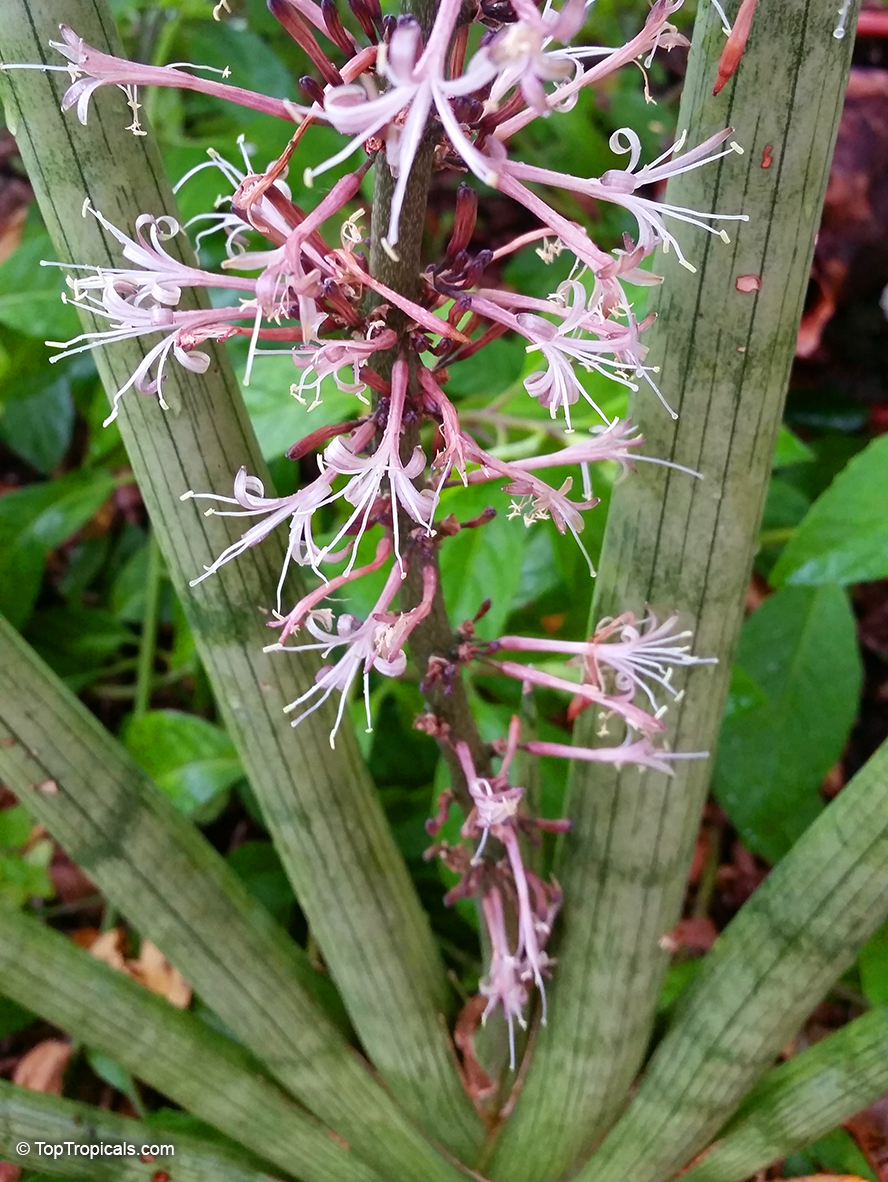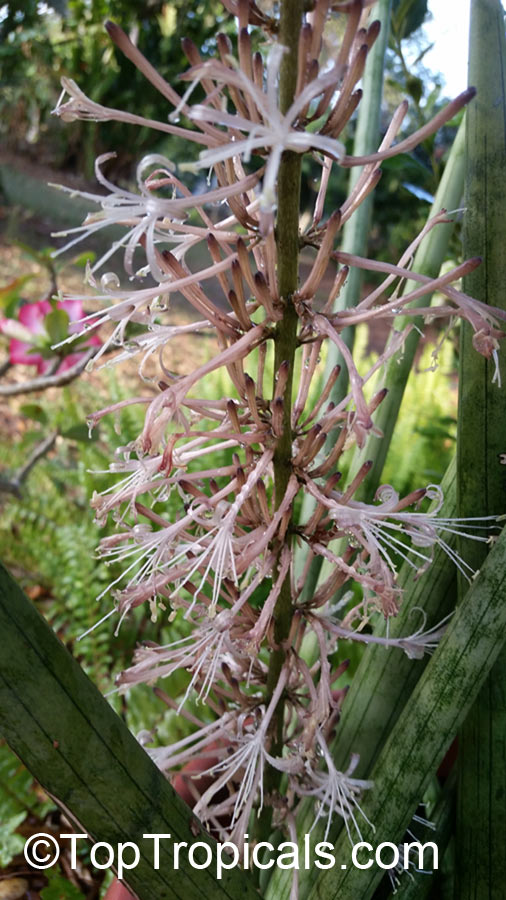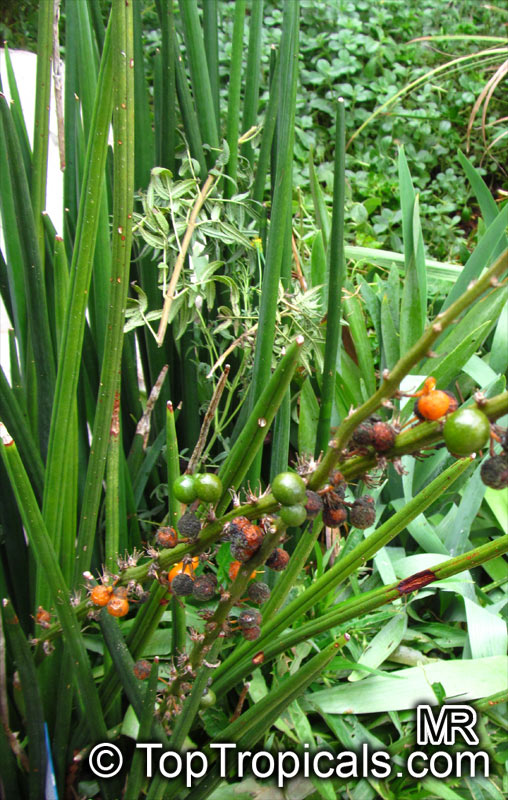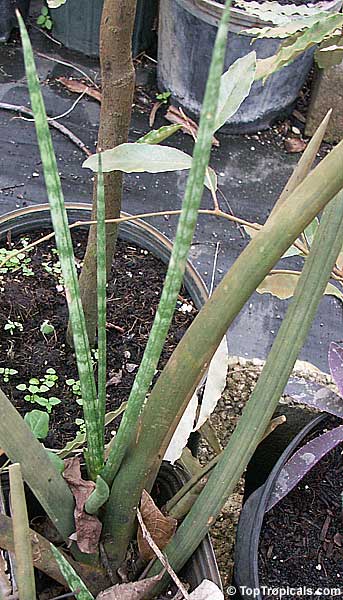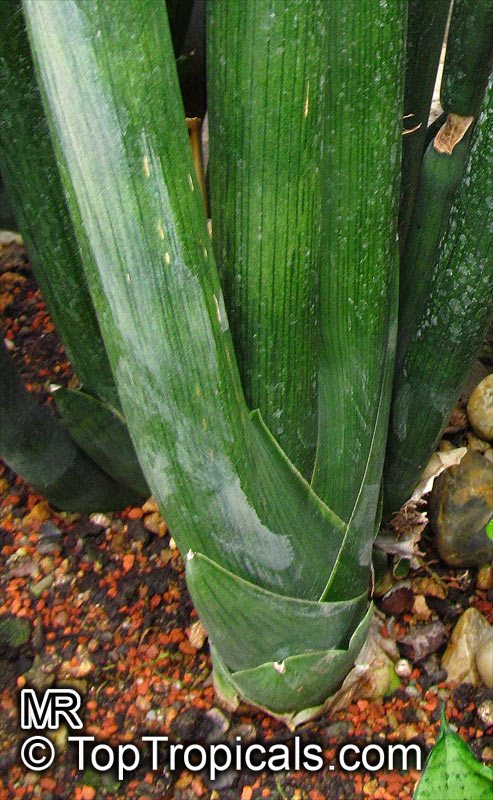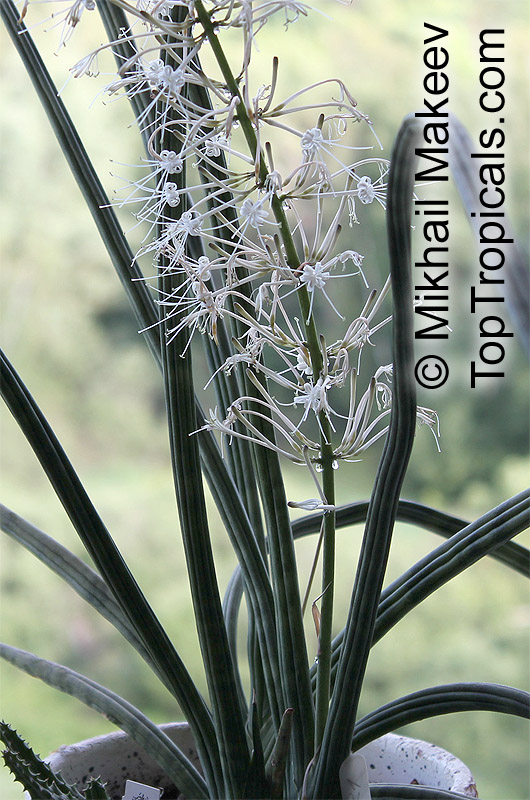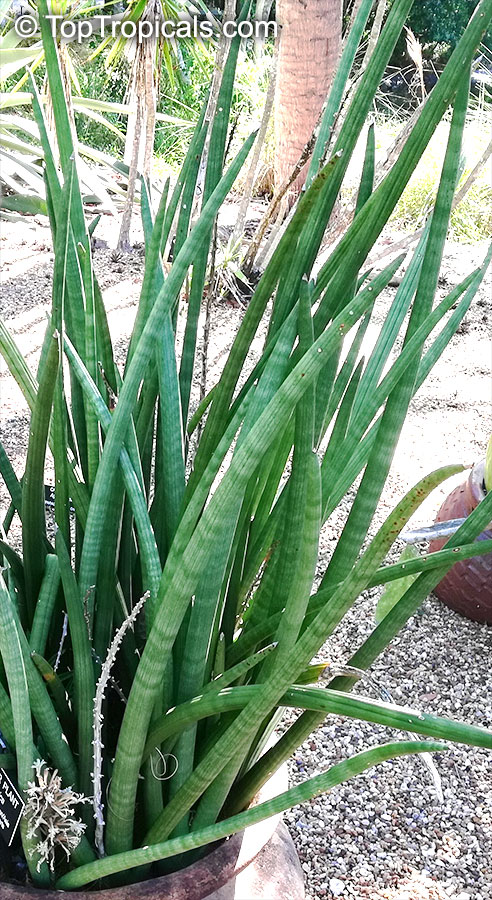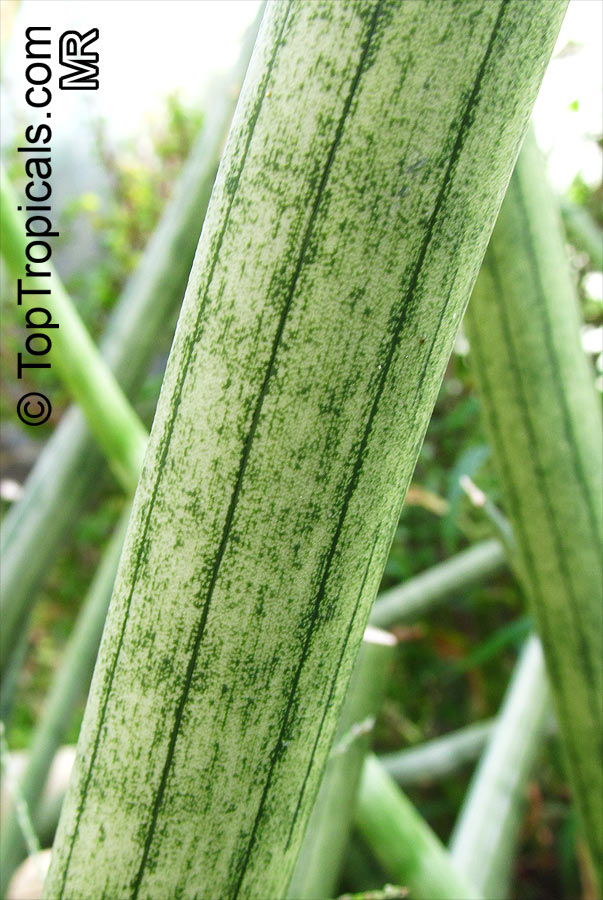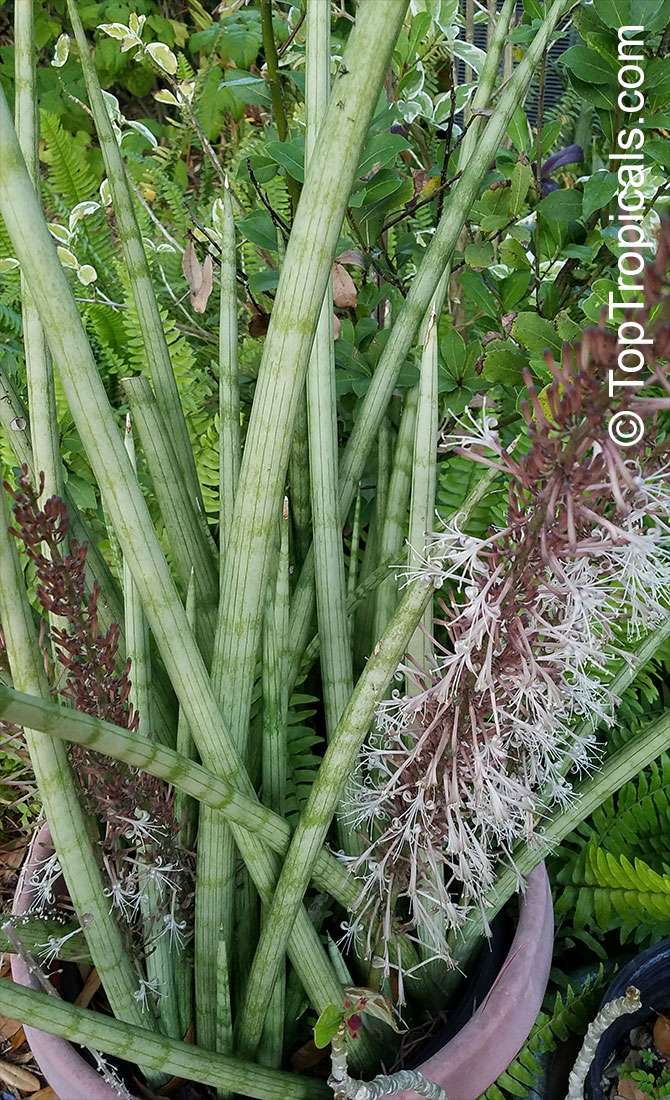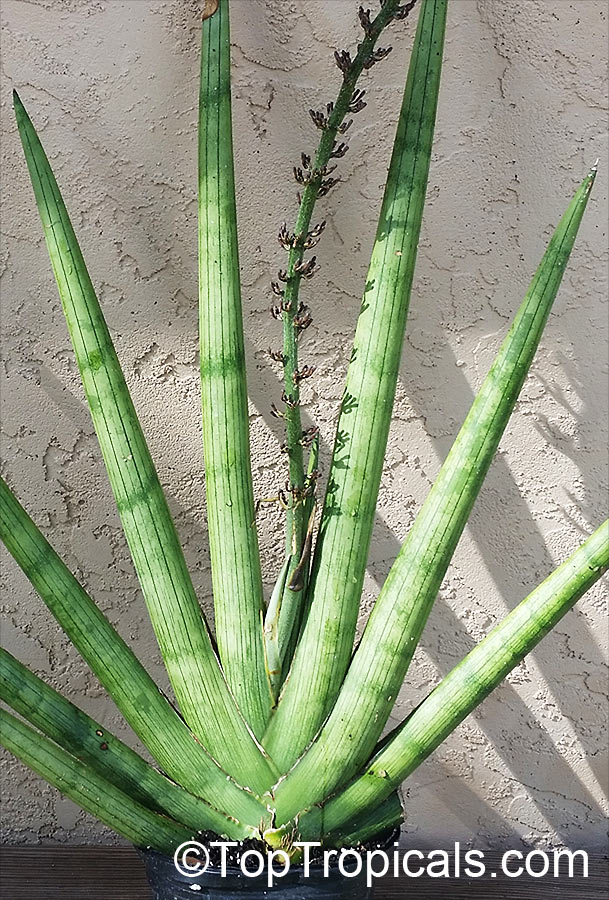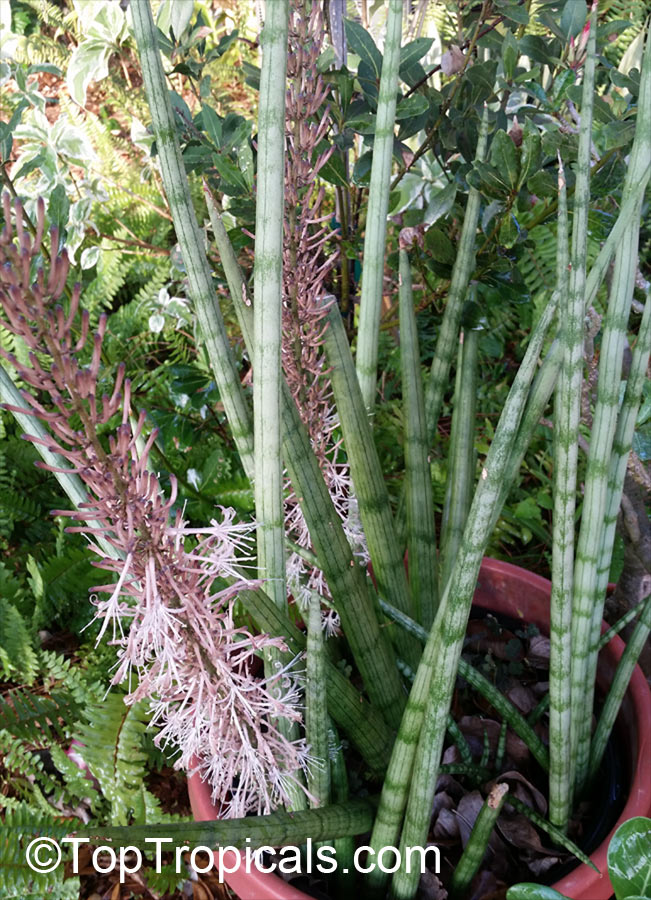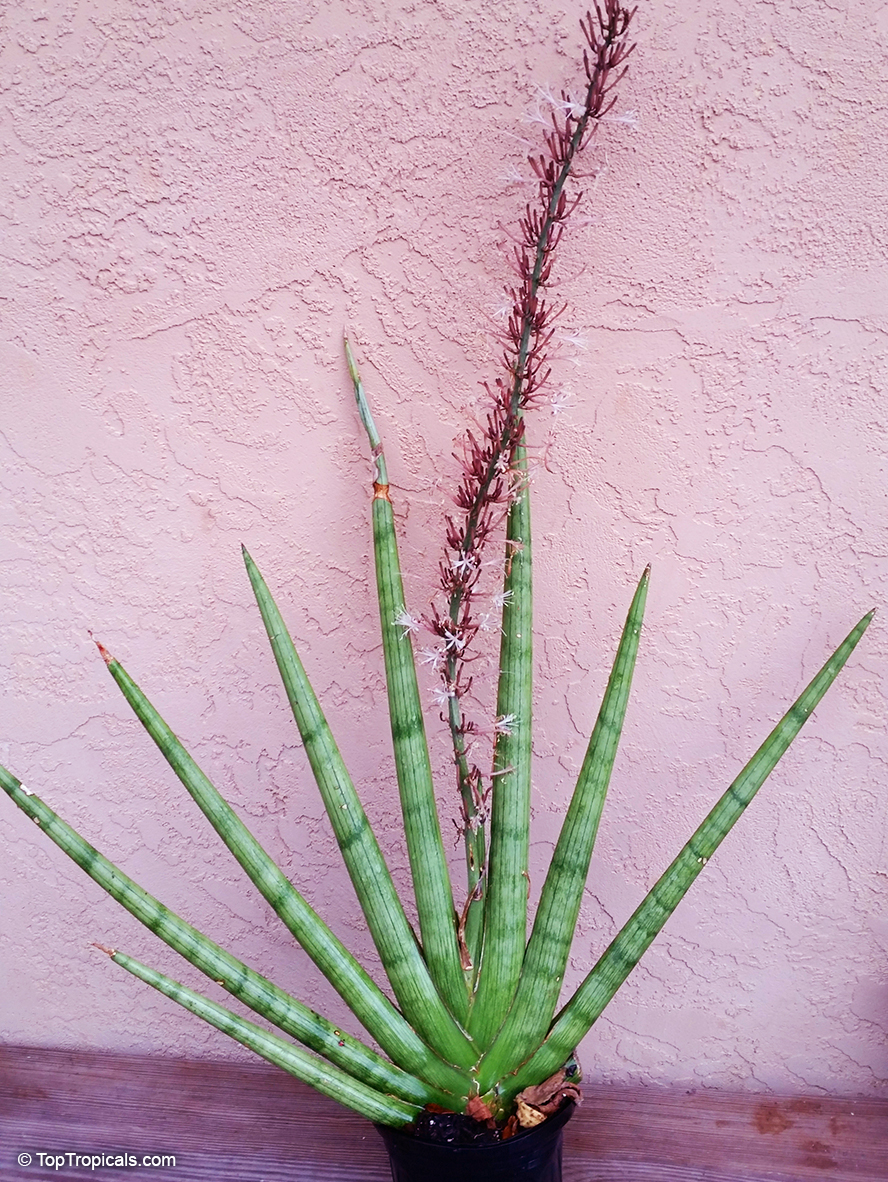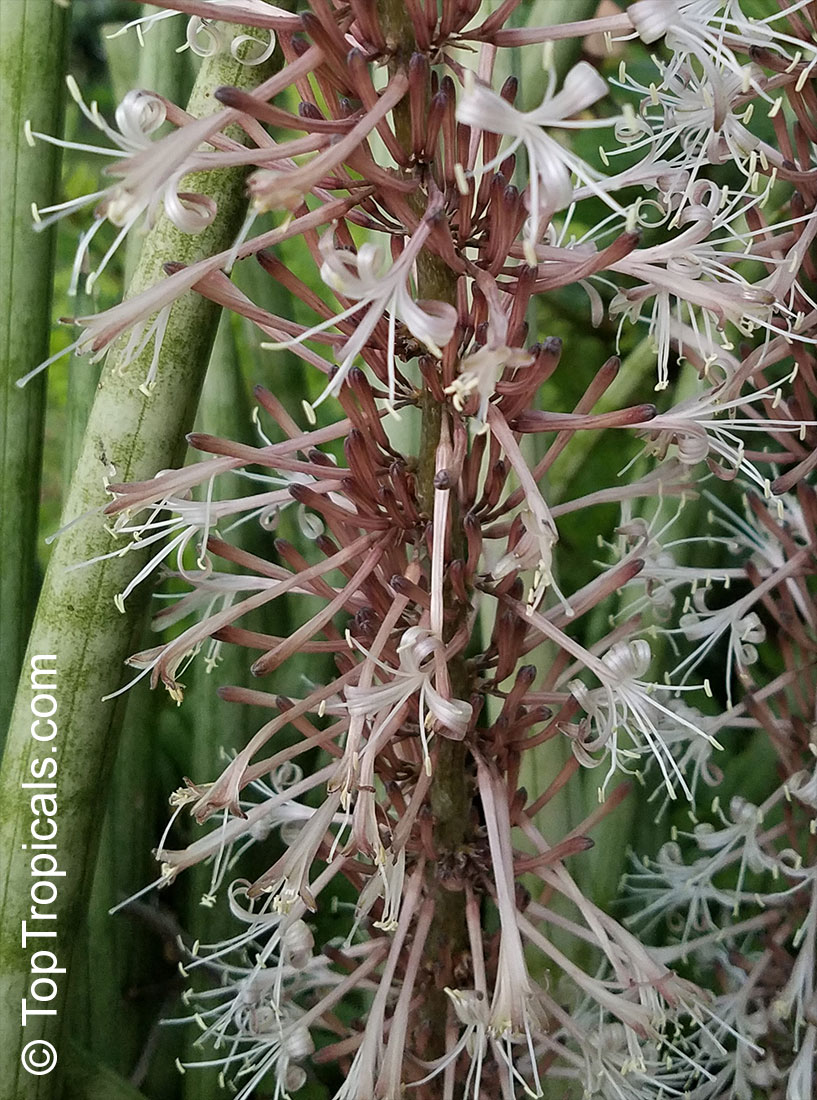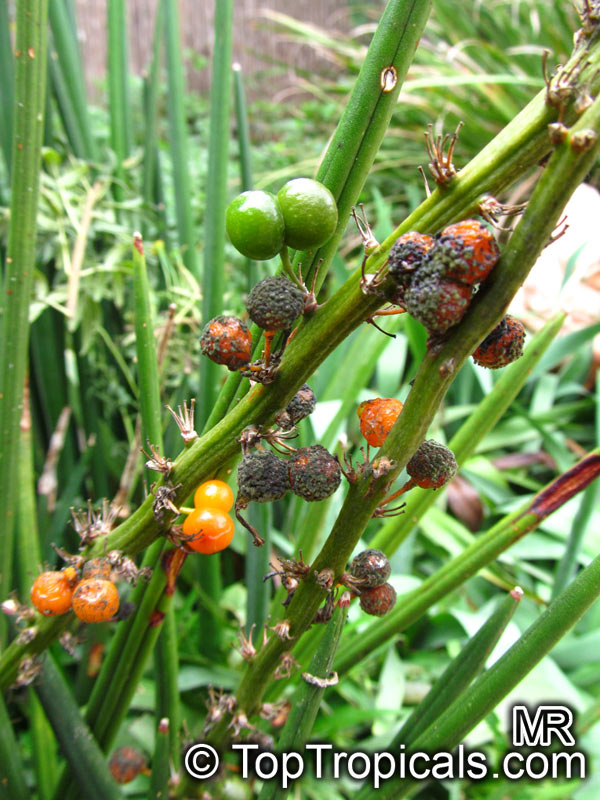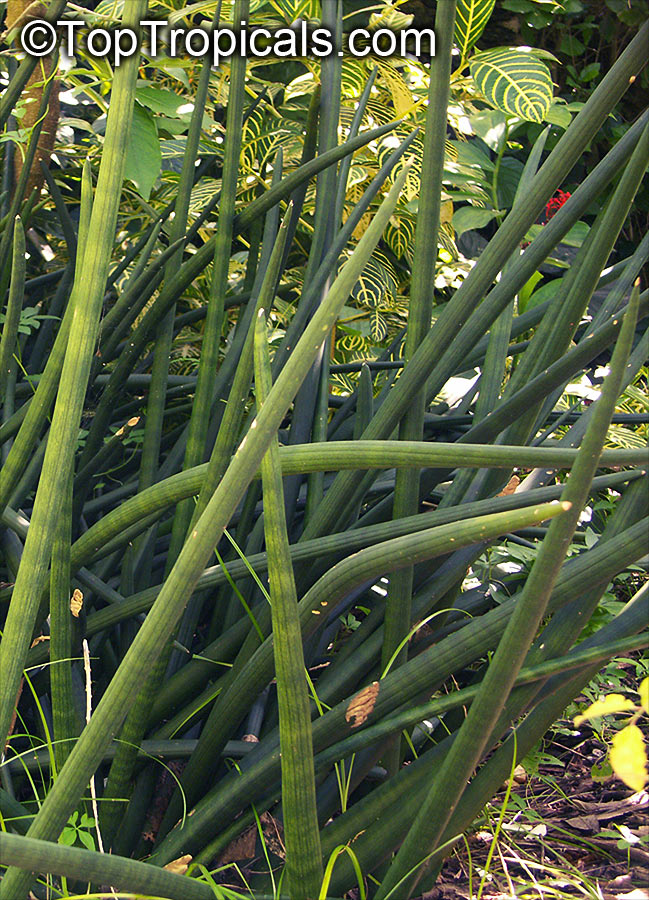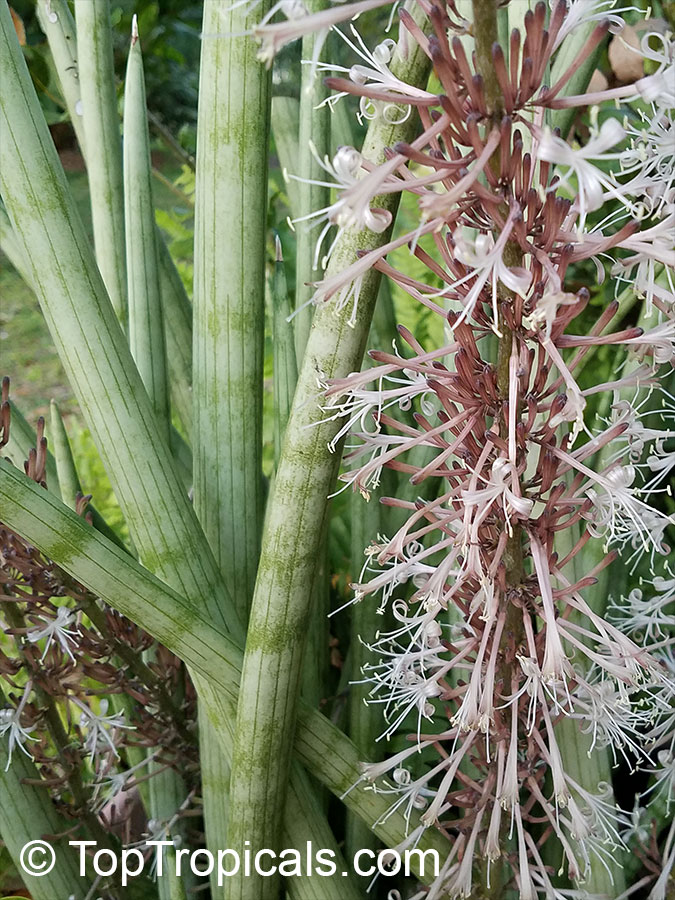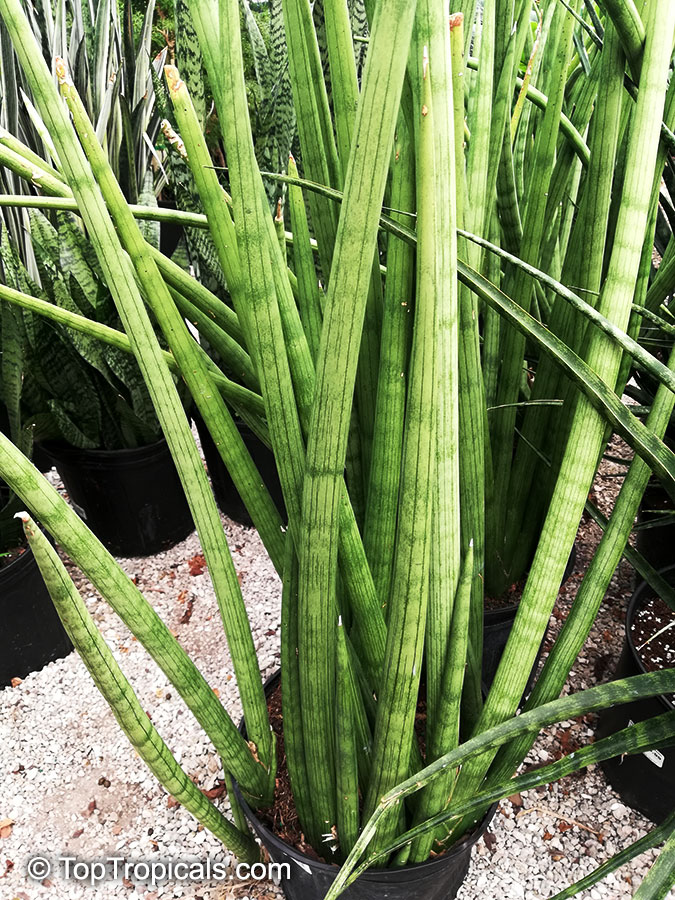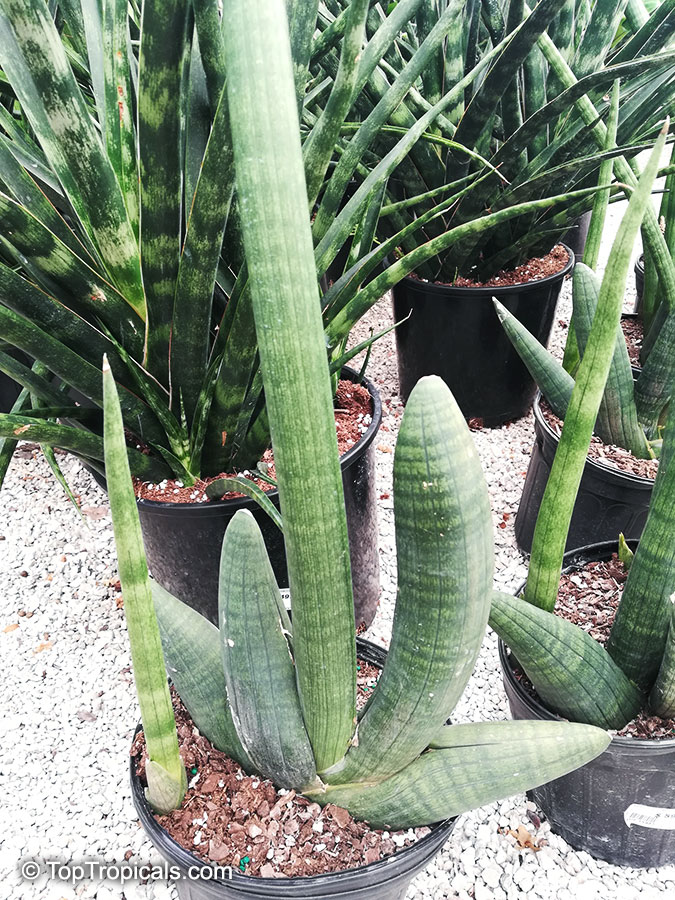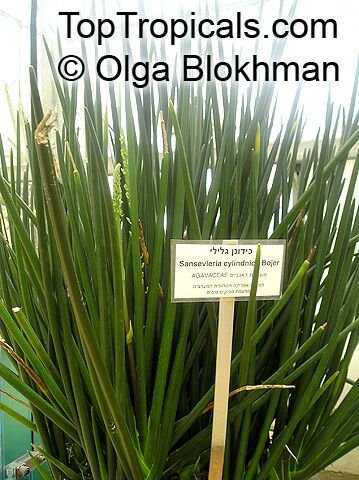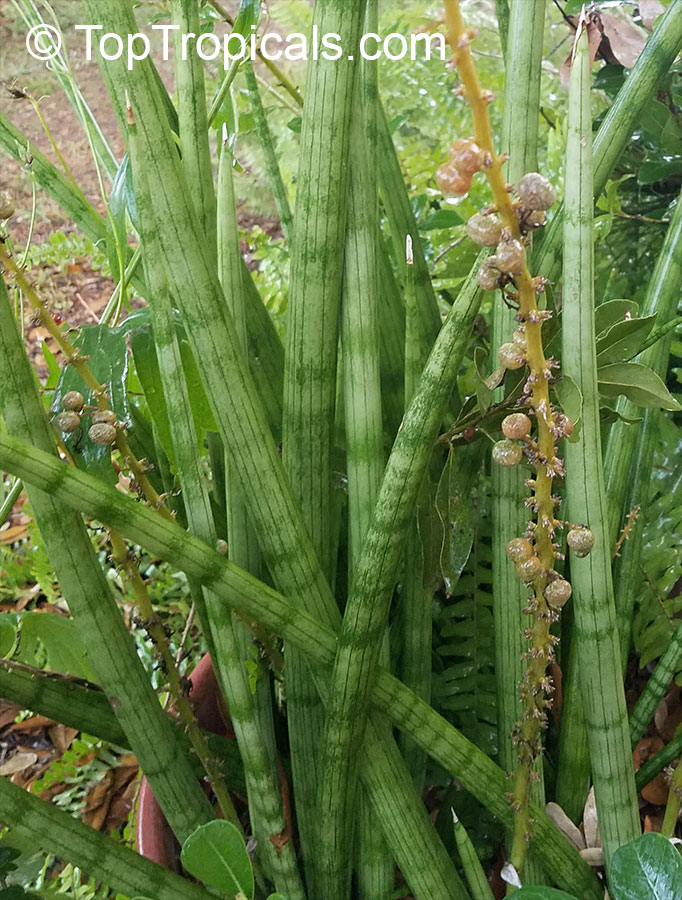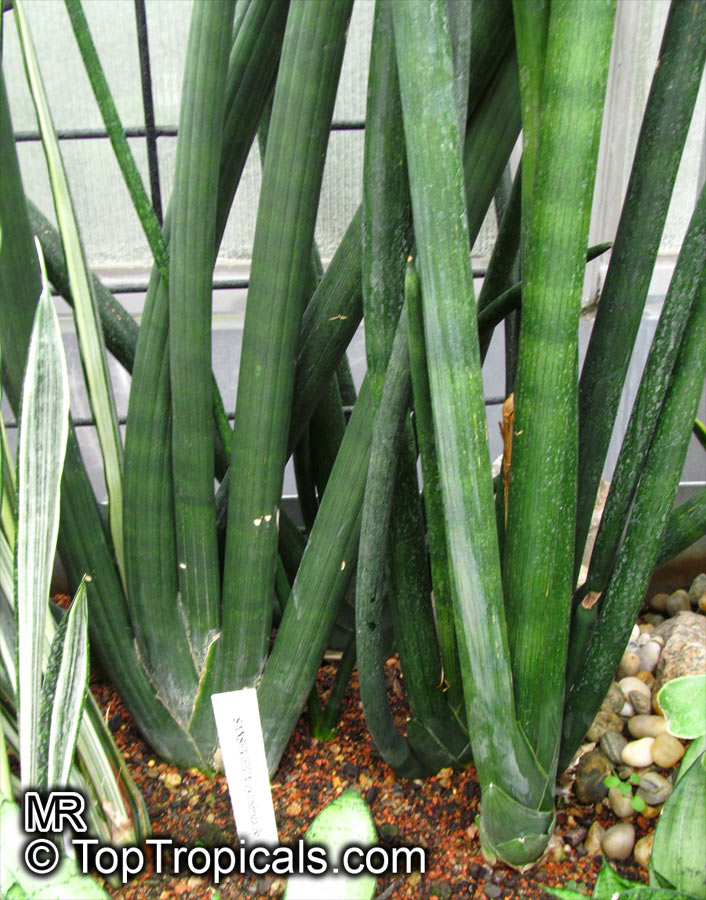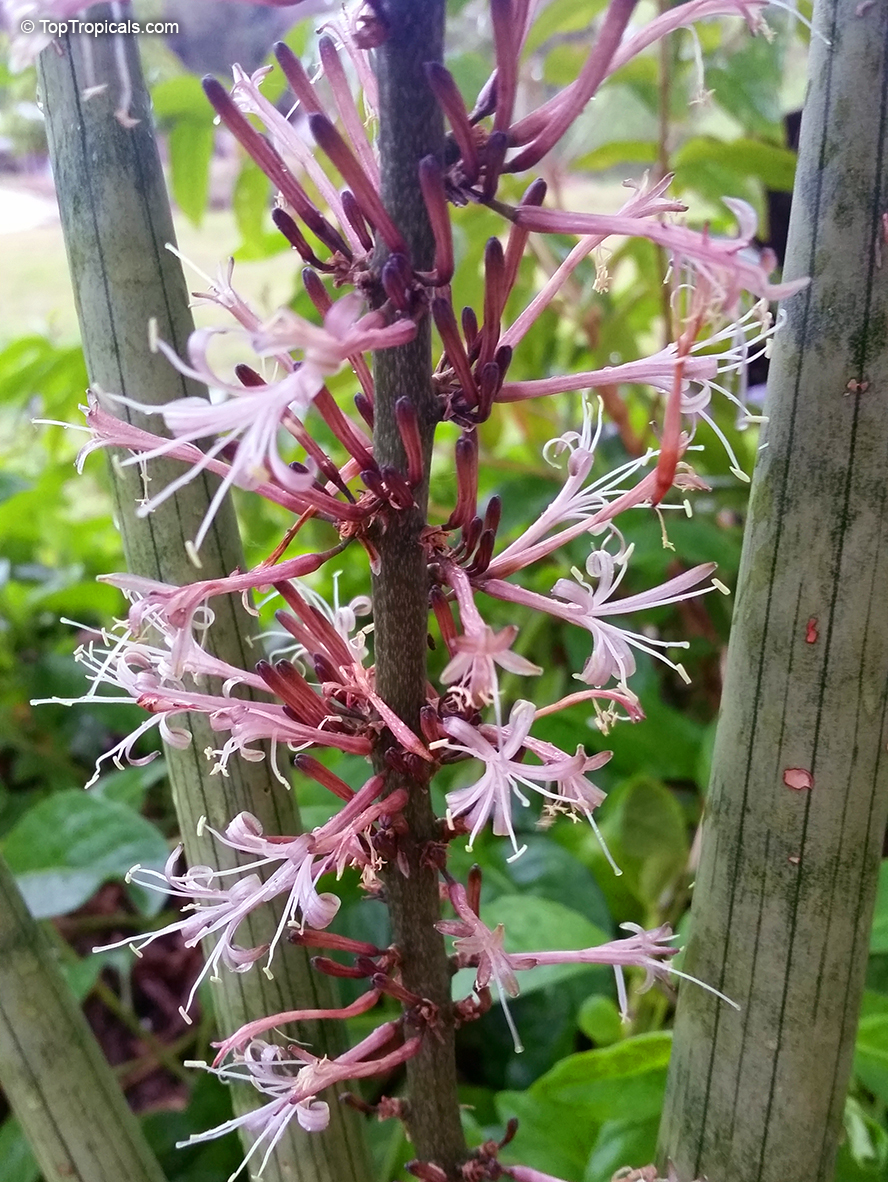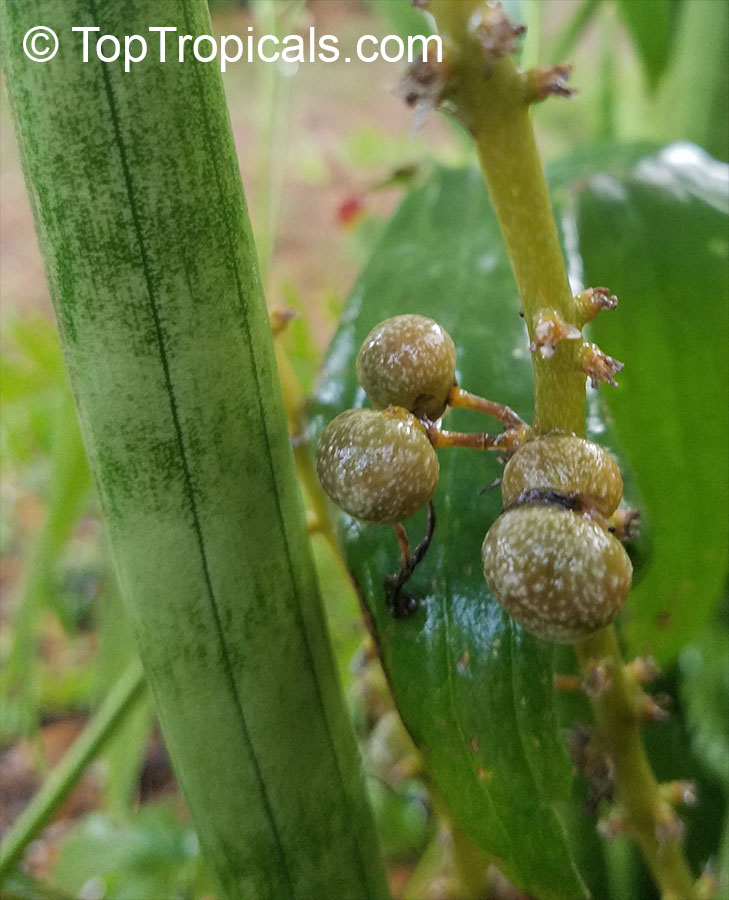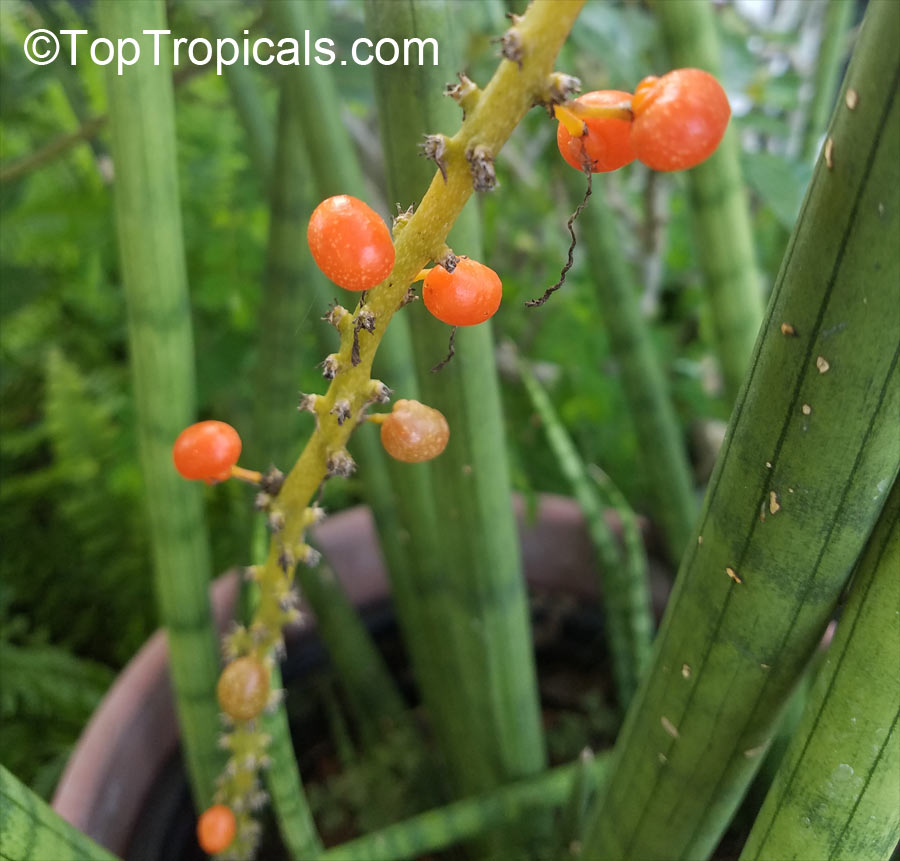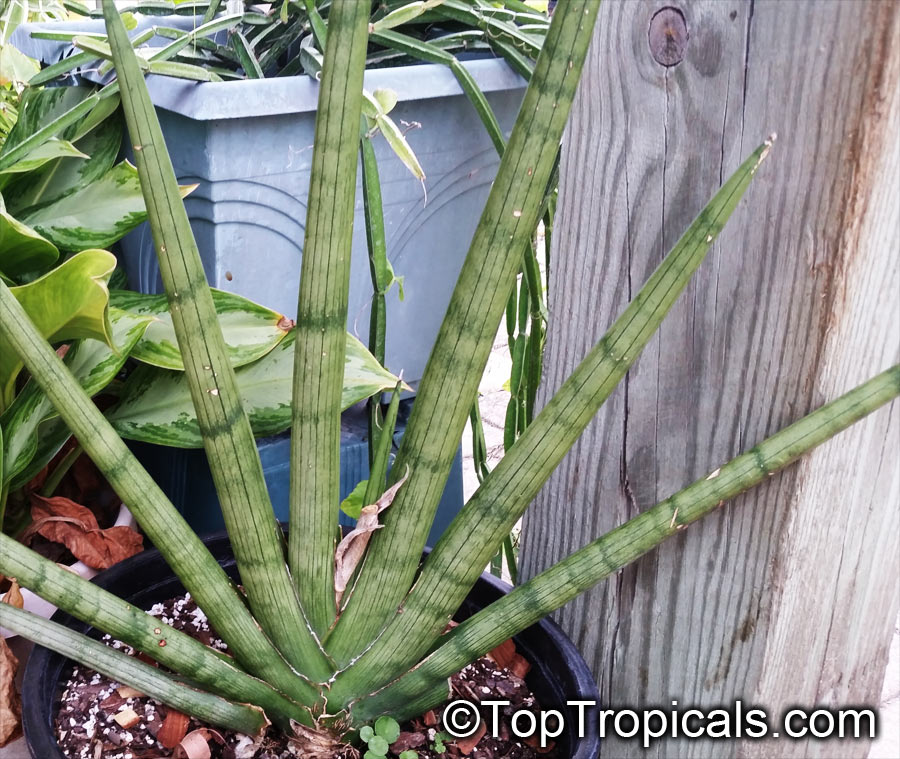Dracaena - Search results
Top Tropicals Plant Encyclopedia
| Number of plants found: 24 | Next | 
|
Go to page: | 1 | 2 | 3 |
Botanical names: Dracaena angolensis, Sansevieria cylindrica, Sansevieria stuckyi
Common name: Snake Plant
Family: Asparagaceae (Formerly:Dracaenaceae / Liliaceae / Agavaceae)
Subfamily: Nolinoideae
Origin: Africa










Very showy and unusual variety of common "Mother-in-Law-tongue". Leaves are tall rounded deep green spikes. Easily grown in any well-drained soil slowly multiplying to create a dense mass. Stately blooms pushing up to 36 inches tall flower spike. The flowers open only during the night and are very fragrant. This plant is drought-tolerant, suitable for growing indoors and for xeriscaping. Propagation by dividing rhizomes.
Link to this plant:
https://toptropicals.com/catalog/uid/sansevieria_cylindrica.htm
| Next |  |
Use link to repeat this search:
https://toptropicals.com/cgi-bin/garden_catalog/cat.cgi?find=Dracaena&search_op=and&keyword_op=and&language=e&number=10
&no_change_lang=1&user=tt&sale=1&first=0
